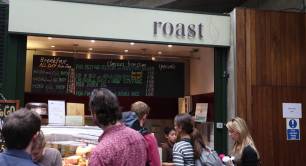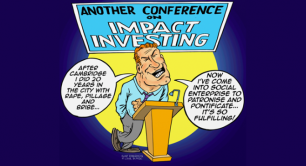New report sets the bar high for impact measurement standards
Founded in 1988, the FRC Group has over the past three years transformed from being a traditional furniture charity to one of the UK's leading social businesses. It runs the Furniture Resource Centre and Bulky Bob's – social enterprises based in Liverpool that provide household furnishings and environmentally friendly waste management services.
The FRC Group have this week published their first ever integrated financial and social value report detailing their commitment to individuals living in poverty and struggling with unemployment through commercially viable enterprise. Verity Timmins, the FRC Group's business development manager, explains the reasons behind creating the report and how it has affected business practise.
Has FRC Group published the first integrated report on social and financial value? We believe that we have…and if not, it is definitely FRC Group’s first integrated report.
After producing stand alone social reports since 1998, we have brought our reporting on all of our value together into one document. If you are interested in accountability issues, you are about to read a little about our method of reporting, the benefits that we see in working this way and a bit of the way we overcame some hurdles, but let’s start with the truly important – what value we created.
Our report of 2013/14 gives the full story but the headlines from an exciting year were:
A commercially very successful year
We made a profit of £458,000 – our highest level since 2000 and with grant income of only 3%. Against a backdrop of austerity budgets, public spending cuts and increasing competition, the hard work of our staff and a clear strategy created good financial returns.
To put this in the context of high social value creation – 932 families in crisis receiving free furniture packs and 94% of unemployed people on our Launch Pad programme achieved their goals. We've also recruited people onto our Driving Change programme to help them overcome issues standing in the way of them finding work and we've made pre-loved, recycled furniture available to 5,207 customers.
Doing things right and doing the right thing
All of this value matters to our stakeholders and we want to be able to tell one coherent story that gives an understanding of the relationships between our financial and social performance. If creating financial value tells us we are doing things right, our analysis of social value tells us if we are doing the right things. For a social enterprise both of these elements have got to be working together and our integrated report is gong to help our stakeholders hold us to account.
Integrating our reporting more accurately reflects how we function and is in keeping with being a double-bottom line business. Creating social value is inextricably woven into our model and it is important that in all of our conversations with stakeholders, the “double bottom line” is apparent.
The principles of our reporting remain unchanged – it is still about telling a clear and full story to all of our stakeholders, being transparent about what worked well and where we have learned from our mistakes.
In bringing the social and financial reporting together, we believe we have strengthened our credibility even further. Our Director’s Report now gives a detailed, assured account of the social value that we have created and truly brings the social impact story to life.
Our standalone social report was previously assured by a third-party sustainability auditor – this practice has been improved by integrating the audit of the whole report. One team from our auditors BDO LLP carried out both the financial audit and the social value assurance process, using the AA1000 Assurance Standard. The benefits of a joined-up approach to the audit and assurance were not only a more efficient process but a more in-depth one.
It seemed at times that there were big challenges to be overcome. An integrated audit and assurance process and meeting the requirements of Companies House were considered to be two of the potential obstacles to creating a fully integrated report. Our approach is by no means the only possible way to do this, but we have shown that where there is a will there is a way.
This is just a starting point and we are aware of areas for future development. We are going to improve our practice with each subsequent report, finding better ways to understand the relationships between our commercial performance and the social value we create – looking at value created in the year and also analysing how financial value created now is invested for future social value.
By integrating how we report to our stakeholders, we have aligned our external reporting with how we report internally. Using the data to manage performance, find ways to improve the services we deliver and to make informed decisions about investment. We are using social value budgets which sit alongside our financial budgets.
Our next integrated social and financial value report will include data arising from the social value budgets we are using within the business, and over the coming years an increasing amount of this information will be used in our public reporting.
Photo credit: The FRC Group



